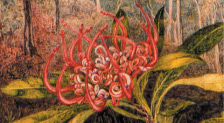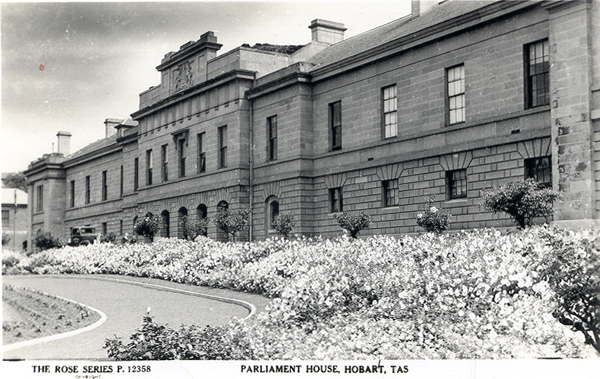 |
 |
PARLIAMENT HOUSe
Tasmania's first parliament was established in 1825. In Australia only the New South Wales Parliament is older, being founded one year earlier. The Legislative Council (a non-elected body) first met at old Government House, located on the current Franklin Square. John Lee Archer designed the present Parliament House in 1830 as the Customs building. It was an obvious location for customs operations, being close to the water, before the later land reclamation. Formal work, mostly by convicts, began in January 1835 and the basement level was finished by March 1836. By 1838 the second storey was ready and the Customs Department opened for business in 1840. The stone was quarried from the Queen’s Domain and Salamanca Place. In 1841 the Legislative Council met in the 'Long Room', having stopped using a chamber adjoining old Government House. In 1856 alterations to the building to accommodate the new bicameral Parliament began, and in December the new House of Assembly met in the 'Long Room', while the Legislative Council moved from there into its present Chamber. In 1903–04 customs officers finally moved to premises along Davey Street. Parliament has been the sole occupant of the building since. Between 1938 and 1940 the building was altered again to provide the present Assembly Chamber and convert the 'Long Room' into the Members’ Lounge, and the Legislative Council was extended to create the Murray Street wing. The latest alterations and additions, 1977–80, provided office space for members, Hansard, the Parliamentary Library, committee rooms and additional facilities. The House of Assembly was last remodelled in the late 1970s, with the replacement of the former panelling and acoustic tile cladding that was part of the design of the original Chamber. The traditional green colour of the House of Assembly is visible in both the colour of the carpet and the two rows of green leather seats. The present Legislative Council Chamber is predominantly red, in the Westminster tradition. The wood panelling is made of highly polished New South Wales cedar. The walls above the panelling and the ceiling are hand stencilled. Current conservation works are, where practicable, aimed at restoring the building to its original style, described in 1901 as aiming to 'very favourably impress the beholder'. Further reading: Parliamentary Library, 'Backgrounder’ information sheets, 2002. Bryan Stait |
Copyright 2006, Centre for Tasmanian Historical Studies |
